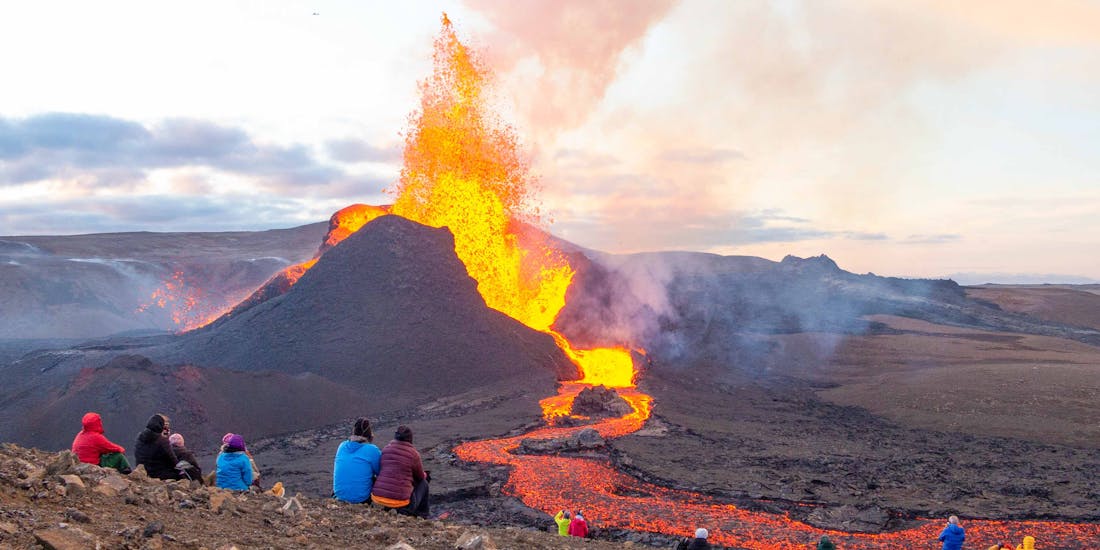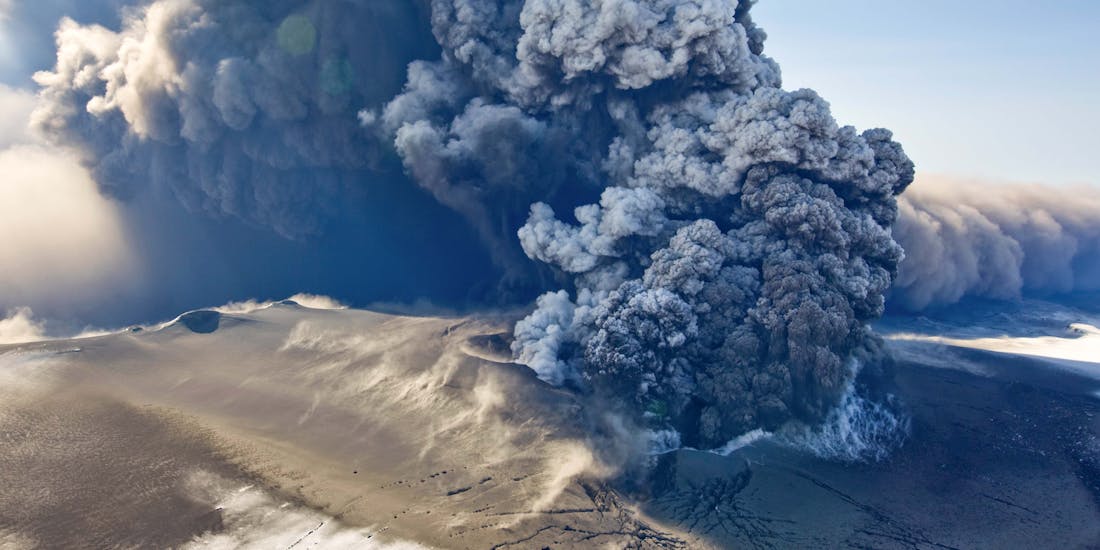If you’re here, you’re just as intrigued with this stunning country as we are. In this guide, you’ll get to explore Iceland's volcanic realm, a landscape as intense and dynamic as any in fiction. And yes, we are talking about the hit series, Game of Thrones!
Just as the Seven Kingdoms are shaped by dragons and fire, Iceland's rugged terrain is molded by the primal forces of volcanic activity.
Here, we'll explore the real-life counterparts to some of the most iconic locations from the hit series, from the fiery eruptions of Eyjafjallajökull reminiscent of the dragons' breath to the frozen beauty of Snæfellsjökull, evoking the mysterious lands beyond the Wall.
Before we get to the juicy, or should we say fiery bits, let’s just understand a little more about this unique landscape.
Why is Iceland full of volcanoes and how many are there?
Iceland has around 130 volcanoes, most of which are active, with only dormant ones found in the Westfjords, the oldest part of Iceland, formed about 16 million years ago. This area lacks volcanic activity because it's been pushed away from the Mid-Atlantic Ridge.
Iceland's location on the Mid-Atlantic Ridge, dividing the North American and Eurasian tectonic plates, makes it a hotspot for volcanic activity. These plates are divergent, moving apart from each other, allowing magma to rise and cause volcanic eruptions along the rift.
Thingvellir is a notable spot to witness this, where you can stand between the plates and see the continents' walls in Thingvellir National Park. This movement causes the valley to widen by about one inch (2.5 centimeters) every year.
Wow, that's a lot! How many of them are still erupting?
Well, there are about 32 active volcanoes scattered throughout Iceland, except in the Westfjords area. Besides sitting on the Mid-Atlantic Ridge, Iceland also sits above a hot spot, where there's extra-high magma activity. You might have heard of other famous hot spots like Yellowstone National Park and Hawaii!
The main active volcanoes in Iceland form a kind of curved line from northeast to southwest. They include Krafla, Askja, Laki-Fogrufjoll, Grimsvotn, Hekla, Vatnajokull, and Katla, and then Heimaey and Surtsey on the Westman Islands. Grimsvotn is the most active of them all.

What was the most recent eruption?
There was a volcanic eruption near Sýlingarfell on the Reykjanes peninsula in southwest Iceland, on February 8, 2024. Since then, things have calmed down a lot. To know more about safety in Iceland, check this out.
In July 2023, there was another eruption near the Litli-Hrutur mountain, close to the Fagradalsfjall volcano on the Reykjanes peninsula. This was the third eruption in that area in three years, with the first one happening in 2021. Before that, there hadn't been any eruptions on the Reykjanes peninsula for over 800 years.
The eruption started after a week of constant earthquakes in the area, which matched the patterns of the previous eruptions in 2022 and 2021. Locals were kind of expecting it because of those earthquakes, so when it finally happened on July 10th, people were pretty excited to see the new fissure.
How does Iceland harness the power of the volcanoes?

Geothermal Energy from Icelandic Volcanoes: A big part of Iceland's economy and daily life relies on the power of geothermal energy. Most of the hot water in Iceland comes straight from the ground, heating homes and providing hot water cheaply and without hurting the environment. Even in the winter, fresh produce like vegetables and fruits grow in greenhouses all year round. About 30 percent of Iceland's electricity comes from geothermal power stations, with the rest from hydroelectric sources. This makes Iceland one of the few countries using mostly renewable energy. However, not all use of Icelandic volcanoes is positive. Some heavy industries, like aluminum smelting, are growing in Iceland because they see the potential of using this abundant and free heat source.
Tourism Around Iceland's Volcanoes: Iceland's tourism industry also thrives on its volcanoes. After all, you can't be called the "Land of Fire and Ice" without both forces at play. Many people credit the 2010 eruption of Eyjafjallajokull volcano with Iceland's tourism boom, even though it caused chaos for airlines. As news channels worldwide struggled to pronounce its name, millions saw footage of Iceland's raw, dramatic beauty, inspiring them to visit. So it's no surprise that a lot of tourism revolves around exploring volcanoes and volcanic areas. If you want to explore more than just this, there is a host of things to do in Iceland’s capital, Reykjavik!
The top volcanoes in Iceland

- Eyjafjallajökull: Famous for its 2010 eruption that disrupted air travel across Europe, Eyjafjallajökull is located in the south of Iceland. It's surrounded by glaciers and has some stunning views.
- Katla: Situated to the east of Eyjafjallajökull, Katla is one of Iceland's most active volcanoes. It's covered by the Mýrdalsjökull glacier and has a history of powerful eruptions.
- Hekla: Known as "Gateway to Hell" in medieval times, Hekla is one of Iceland's most notorious volcanoes. It's located in the southern part of the country and has erupted numerous times throughout history.
- Snæfellsjökull: Rising majestically from the Snæfellsnes Peninsula in western Iceland, Snæfellsjökull is famous for its role in Jules Verne's novel "Journey to the Center of the Earth." It's a stratovolcano capped with a glacier.
- Askja: Located in the remote central highlands of Iceland, Askja is a volcanic caldera with a central lake known as Öskjuvatn. It's a popular destination for hikers and offers breathtaking views of the lunar-like landscape.
- Bárðarbunga: Situated beneath Iceland's largest glacier, Vatnajökull, Bárðarbunga is one of the most powerful and active volcanoes in Iceland. Its last major eruption occurred in 2014.
- Grímsvötn: Another volcano located beneath the Vatnajökull glacier, Grímsvötn is one of Iceland's most active volcanoes. It's known for its subglacial eruptions and ash plumes.
- Krafla:Located in northeastern Iceland, Krafla is a volcanic caldera with a history of both explosive and effusive eruptions. It's surrounded by geothermal areas and colorful volcanic craters.
- Laki: Known for its massive 1783-1784 eruption, Laki is a volcanic fissure in southern Iceland. Its eruption had significant environmental and historical impacts on Iceland and Europe.
- Surtsey: Formed in a series of eruptions between 1963 and 1967, Surtsey is one of the youngest islands in the world. It's located off the southern coast of Iceland and is a UNESCO World Heritage Site.


